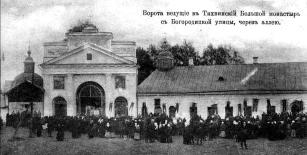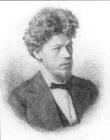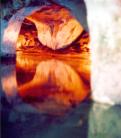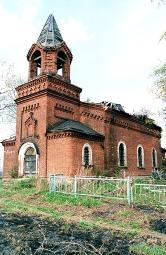Articles
/
Staraya Ladoga Monastery of St. Nicholas the Wonderworker
Staraya Ladoga Monastery of St. Nicholas the Wonderworker
Subject /
Religion. Church/Monasteries and convents
The Staraya Ladoga Monastery of St. Nicholas the Wonderworker (Nikolsky; the village of Staraya Ladoga). On a local legend the monastery was founded in the 13th century in honour of the victory of Saint Prince Alexander Nevsky in the Neva battle. The archeological dig (1971-1972) points to the second half of the 12th century (the beginning of the 1160s ?). Originally the single-domed four-pier stone Cathedral of St. Nicholas the Wonderworker with with dome-shaped roof consisting of two roofs intersecting at the right angle was built. The cathedral was rebuilt in the 15th-16th centures. At the Terrible Time the monastery was a sanctuary for the Valaam Monastery monks. After the Sweden destruction of 1617 the monastery was renewed in 1622; the Cathedral of St. Nicholas the Wonderworker was completely rebuilt. At the same time the refectory church of St. John the Goldenmouth. Since 1714 the monastery was under the jurisdiction of the Alexander Nevsky Lavra. In 1771 the monastery was closed. In 1811 according to the order Alexander I it was repeatedly opened as a supemumerary monastery. At the same time the Staraya Ladoga Monastery of St. John the Precurser was attached to the Monastery of St. Nicholas the Wonderworker. In 1818 the monastery chapel in the town of Novaya Ladoga was built, in 1827 oce more monastery chapel was built in St. Petersburg. In 1826-1827 the northern Tikhvinsky and Antipiyevsky side-altars of the cathedral were rebuilt, in 1841 the church porch was built up the the cathedral. The main Holy Communion table of the lower church was consecrated on the name of the Cathedral of the Mother of God in 1847, at the same time the iconostasis was restored (the architect G.X. Shtegeman, the painter N.G. Shishkin). The monastery achieved the greatest prosperity under the Hegumen Apollos (1850-1859) under which the building from brik of the domestic manufacture was carried actively. A three-storied building was constructed to the west of the cathedral in 1852, at the same time the Antipiyevsky side-altar was renovated. During 1860-1873 the new warm church of St. John the Goldenmouth with the side-altar of St. Nazary the Martyr (the architect A.M. Gornostayev) was constructed. The last constructions were done in 1907-1908 (the fence was designed by the architect N.N. Nikonov) and in 1910-1913 the Tikhvinsky side-altar (the architect A.P. Apraksin) was built. During 1810-1822 an uyezd college for children of the New Ladoga district clergy worked. The famous missionary archimandrite Gideon (Fedotov) was one of the college rectors. In 1841 a college for peasnts' children was opened, in 1862 it was transformed in a free school. The painter- peredvizhnik (a painter who was a member of the Society for Travelling Art Exhibitions) V.M. Maksimov was graduated from this school. The hieromonk Antony (Bochkov) was a spiritual father of the monastery during 1852-1857. In the cathedral there were the miracle-working icons: the icon of St. Nicholas the Wonderworker and the icon of St. Parasceva the Martyr. A cross-reliquary (1627) was also a respected relic of the monastery. In 1917 the monastery was designated as the place for living vicar bishops of the Ladoga Region. In 1918 the monastery was closed, churches worked as parish ones until 1935. Buildings were used for a machine-tractor station and dwelling; the inner decoration was lost. During the restoration works of the 1950s the cathedral side-altars and the church-porch were destroyed. From 1980 to the 1990s the Holy Gate of the 17th century with shingles cover and the bell tower of the 17th century were restored. In 2002 the monastery complex, except the cathedral which is in the accident condition, was tranfered to the St. Petersburg eparchy; the hegumen Varpholomy (Chupov) was appointed the superior of the monastery. Regularly prayer services are performed in the church of St. John the Goldmouth (it was repaired outside, paintings were survived partially). Buildings in the northern part of the monastery are restored. Objects of worship are elements of the Holy relics of St. Nicholas, the icon of the Chernigov of the Mother of God.
Authors
Bertash, Aleksandr Vitalyevich
Persons
Alexander I, Emperor
Alexander Nevsky, Prince
Antony (Bochkov), Father Superior
Aplaksin, Andrey Petrovich
Apollos (Aleksandr Ivanovich Popov), father superior
Gedeon (Fedotov), archimandrite
Gornostayev, Aleksey Maksimovich
Maksimov, Vasily Maksimovich
Nikonov, Nikolay Nikitich
Shishkin, Nikolay Grigoryevich
Stegeman, Heinrich Christianovich
Varfolomey (Vladimir Chupov), father superior
Geography
Leningrad Oblast, the/Volkhov District/Novaya Ladoga Town
Leningrad Oblast, the/Volkhov District/Staraya Ladoga Village
Bibliography
Кирпичников А. Н., Сарабьянов В. Д. Старая Ладога – древняя столица Руси. СПб. 1996, С.43-48
Святыни Волховской земли /Авт.- сост. послушник Роман Левшин. Старая Ладога, [2006]., С.43-48
Subject Index
Staraya Ladoga Monastery of St. John the Precurser
Mentioned in articles:
|
hidden
|
Antony (Bochkov) (1803-1872), hegumen, clergy figure
Antony (Aleksey Polikarpovich Bochkov; 1803-1872), a hegumen, clergy figure, ecclesiastical writers. He studied in a private boarding school, took part in literary life. In the 1820s he often went to Revel; he published some essays, two stories... more
|
|
|
hidden
|
Bashutsky, Aleksandr Pavlovich (1803-1876), a literary man
Aleksandr Pavlovich Bashutsky (1803-1876), a literary man, publisher. During 1811-1822 he learned at the Page College. During 1824-1832 Bashutsky was an aide-de-camp of St. Petersburg governors: M.A. Miloradovich, P.V. Golenishchev-Kutuzov, P.K.... more
|
|
|
|
hidden
|
Gornostayev, Aleksey Maksimovich (1808 - 1862), an architect
Aleksey Maksimovich Gornostayev (1808 - 1862), an architect, a founder of the national line in the Russian arcitecture. In 1834 he was certified at the St. Petersburg Academy of Arts, then he spent 4 years in the West Europe. In 1838 Gornostayev... more
|
|
|
|
hidden
|
Maksimov, Vasily Maksimovich (1844-1911), an artist
MAKSIMOV, Vasily Maksimovich (1844, Lopino Village, Novaya Ladoga Uyezd – 1911), painter. He was born in a family of peasants, graduated from a school at the monastery. He painted icons at St.Nicholas Monastery in Staraya Ladoga Village. In 1855 he... more
|
|
|
|
hidden
|
Nikonov, Nikolay Nikitich (1849 - 1918), an architect
Nikolay Nikitich Nikonov (1849 - 1918), an architect,expert of the "russian style". From the 1860s Nikonov learned at the Academy of Arts in St. Petersburg. During 1893-1906 Nikonov was the architect of the St. Petersburg Eparchy. He was the... more
|
|
|
|
hidden
|
Orthodox monasteries
The Othodox monasteries. The oldest monasteries located on the territory of the Leningrad Oblast - the Monastery of the Dormition, the Monastery of St. Nicholas the Wonderworker and the Zastenny Monastery of St. George in Ladoga were founded... more
|
|
|
|
hidden
|
Staraya Ladoga, Village
STARAYA LADOGA (Ladoga before 1704), a village in Volkhov District. Population: 2200. Located on the left bank of the Volkhov River where the Ladozhka (Yelena) River flows into it. The toponym is of a Baltic Finnish origin, from Alodejogi (lower... more
|
|
|
|
hidden
|
Volkhov District
VOLKHOV DISTRICT, a part of Leningrad Oblast. Area: 5124 sq. km, population: 97,300. Established in 1927. Adm. center: Volkhov Town. V. D. comprises the towns of Syasstroy and Novaya Ladoga, and 277 rural localities. Located south of Lake Ladoga on... more
|
|
|
|













